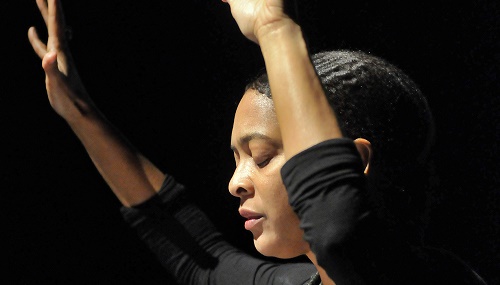
She’s Boston’s Poet Laureate, but before you settle down with one of her books of poems, search for Danielle Legros Georges on YouTube and listen to her read her work, experience the way she makes the words come to life in the room. Start to understand as you watch her that poetry is not just oddly formed stacks of words printed on a page; poetry is a vibrant, exciting and entertaining form of art. And it’s a lot more accessible than you think.
“My role as Poet Laureate is two-fold,” Danielle said in an interview with Color Magazine. “Part of it is to promote and celebrate the art of poetry and its cultural significance in the city of Boston, both in the past and in the present. The second part is to organize events, like poetry readings, that bring the art form out to the people and shares it with them, helps them discover what poetry can mean to them and how the simple act of reading a poem or hearing one read to them can change the way they look at their world.”
Of course, Danielle understands that poetry is not always the easiest art form for people to approach, whether it’s because they’re unfamiliar with art, don’t ‘think’ they’ll like it or have bad memories of being forced to read poems in school. “Appreciating any form of art takes some effort,” she said. “You don’t just look at a great painting then move on; you go back to it and look again. You look at it more closely and see things you didn’t see that first time. You stand back and see the image, then move close to see the color and brush strokes. You do the same with music and you do the same with poetry.”
In her latest collection of poetry, The Dear Remote Nearness of You, there is a poem called Carson Beach with perfectly exemplifies the need to go back to a work again and again. On the surface, it’s a poem that perfectly captures a visit to the beach on a raw early spring day, the kind of day when you feel that Mother Nature just can’t make up her mind whether to let the sun come out or not.
But look closer. There’s more going on at Carson Beach than you imagined the first time you read the poem. The arrival of spring is really winter fighting for its life. The sun isn’t just shining down; it’s escaped from the ‘gunmetal grill’ of the sky and is on the lam trying to survive as much as Old Man Winter is. The peaceful scene of a walk along the beach is suddenly filled with an air of barely contained violence.
“There was a time not too long ago when I, as a Black Woman from Mattapan, would not have felt safe walking along Carson Beach in Dorchester,” Danielle explains. “Back then during the bussing problems and the racial tensions, the battle lines between neighborhoods were much stricter; you didn’t cross them if you didn’t have to. When I moved to Mattapan from Haiti, there were maybe 60 Hatian families living there. Now it’s holds the third largest Haitian community in America and I live within a 10 minute walk of Carson Beach and go there whenever I can.”
Although, the author’s deep personal connection with the poem Carson Beach may only be learned if you read about it in an interview or hear her talk about it at a reading, the images are clear enough for any reader to take them in and make them their own.
“That is the best success a poem can have,” Danielle said. “The artist creates something and sends it out into the world. If nothing else happens, they have the satisfaction of being the creator. If it finds an audience, no matter if it’s a thousand people or just one that appreciates the work to a degree where it means something to them on a personal level, then that is a much richer experience for the artist. They don’t necessarily have to feel the same way the artist does about the art; they can have their own interpretations and feelings, as long as it means something to them.”
Click here to learn more about the book.


